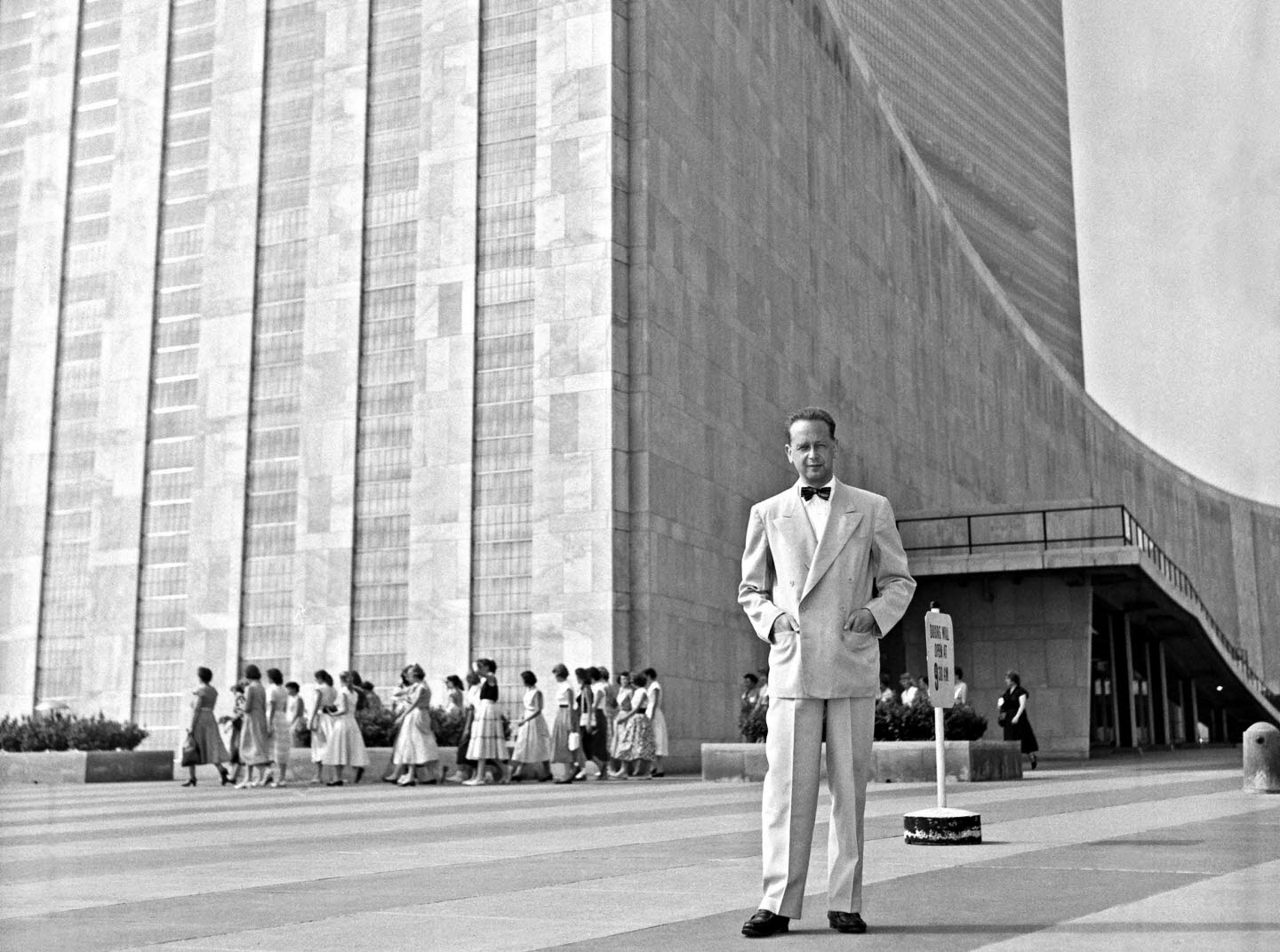1941 - Important role for Hammarskjöld

Dag Hammarskjöld had great influence over the coordination of fiscal and monetary policy, both as state secretary at the Ministry of Finance and as Chairman of the Riksbank's General Council. Later, he became the UN’s first and, so far, only Swedish Secretary-General.
Dag Hammarskjöld (1905–1961) was born in Jönköping. His family moved to Uppsala, where he grew up. He gained a degree in economics and law at Uppsala University and a PhD in economics at Stockholm University College.
As colleague to Governor Ivar Rooth, Hammarskjöld was already working at the Riksbank in the 1930s. This is where he developed the bank’s first consumer price index, among other things.
In 1936, he changed employer and became the youngest ever state secretary at the Ministry of Finance. As the closest colleague to Minister of Finance Ernst Wigforss, Hammarskjöld was responsible for the budget reform of 1937 that became the starting point for an active fiscal policy.
Still employed by the Ministry, he returned to the Riksbank a few years later to become Chairman of the General Council. It was Ivar Rooth who recommended the Government to appoint Hammarskjöld. This appointment was not self-evident. Some considered that the independence desired between the Government and the Riksbank would be jeopardised, as Hammarskjöld was still an employee of the Ministry of Finance. Although the Government was in disagreement, Hammarskjöld was appointed in 1941.
During the Second World War, the various instruments of economic policy were placed in the hands of the Ministry of Finance. As in many other countries, the Riksbank was brought closer to the Government than it had ever been before. Hammarskjöld’s appointment thus came to symbolise how the Ministry of Finance’s fiscal policy with the central government's budget, incomes and expenditure interplays with the Riksbank’s monetary policy and interest rate.
Hammarskjöld also played an important role for Sweden’s economy in the post-war period. In 1946, he developed the proposition for long-term fiscal policy that was later adopted by the Government. Later in his career, he worked at the Ministry for Foreign Affairs and was involved in Sweden's entry to the World Bank and International Monetary Fund. In 1953, he became Secretary-General of the UN. While here, he pushed for the UN to have the right to send peace-keeping forces to conflict zones. This mandate still exists today.
Hammarskjöld's goal was to resolve conflicts at the earliest possible stage. This work contributed to his death. During a mediation assignment in North Rhodesia in 1961, he died in an aviation accident in what is now Zambia. That same year, he was posthumously awarded the Nobel Peace Prize for his efforts in the UN. When Sweden issued its new banknotes in 2015, Dag Hammarskjöld was chosen as motif for the banknote with the highest denomination, 1,000 kronor.
